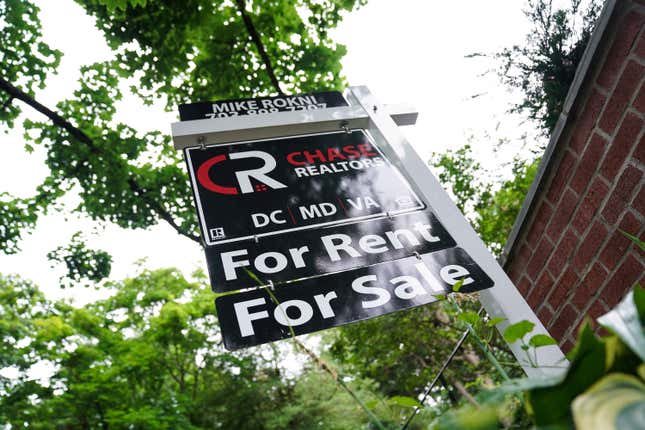
The highly anticipated inflation gauge is out. It shows that consumer prices in September rose 0.4% from the previous month, and 3.7% from a year ago, steady from the 3.7% increase posted in August, according to the latest Bureau of Labor Statistics (BLS) data.
The shelter index—mostly composed of rental costs—increased 7.2% over the last year. That accounted for 70% of all price increases minus food and energy, with gasoline also a major contributor to the rising inflation.
The good news
The consensus is this data is unlikely to prompt the Federal Reserve to hike interest rates at its next meeting. In fact, “today’s data supports being close to the end of the hiking cycle as the US economy remains on a disinflation path,” wrote Goldman Sachs Asset Management’s Lindsay Rosner, head of multi-sector fixed income investing, in a note to clients.
She added this may boost the Fed’s confidence that “monetary policy has been sufficiently restrictive.”
Moody’s chief economist Mark Zandi would agree.
“September CPI was on script—consistent with inflation returning to the Fed’s 2% target,” he posted on X (formerly Twitter).
The bad news (okay, it’s not that bad)
The two major factors driving September’s inflation were gasoline and housing prices.
Motorists should feel slightly relieved at the pump, with gas prices steadily declining over the last week despite the Israel-Hamas war. The national average price of gasoline as of today (Oct. 12) is $3.65, down from $3.84 from a month ago, according to the American Automobile Association (AAA).
The surprise in September was the big bump in housing costs. But analysts aren’t worried, as they’re already seeing signs elsewhere suggesting that growth in rent prices will moderate.
Average asking rents slowed to a 0.2% increase in September, to $2,047, according to the latest Zillow Observed Rent Index (ZORI). This is still 3.2% higher than a year ago, but it continues the now 19-month slowdown in the annual growth rate since it hit a record high of 16% in February 2022.
US home values also fell slightly by 0.1% in September, the first monthly dip since February. This is largely due to a fresh supply of new multifamily construction projects that were financed before a surge in mortgage rates, according to Zillow.
It all suggests that the soaring shelter index in the September consumer price report is an anomaly.
“Today’s report is a reminder that we do not have good historic examples to lean on in determining the path for rent inflation,” Bank of America’s economists wrote in a note to clients.
Pensioners feel the pinch from cost of living
With inflation moderating, Americans receiving Social Security benefits will get a cost-of-living adjustment of 3.2% in 2024, down from the 8.75% boost implemented this year, according to the latest release from the Social Security Administration. But even that hasn’t covered the strain on household budgets. A report from the Seniors Citizen League found 68% of people on Social Security said that household expenses have been 10% higher than the year before, despite cooling inflation.
Meanwhile, over half of the survey respondents were worried Social Security payments will be insufficient to cover their future living costs.
With the increase now set for 2024, pensioners will receive an average of $50 more per month in their Social Security benefits.